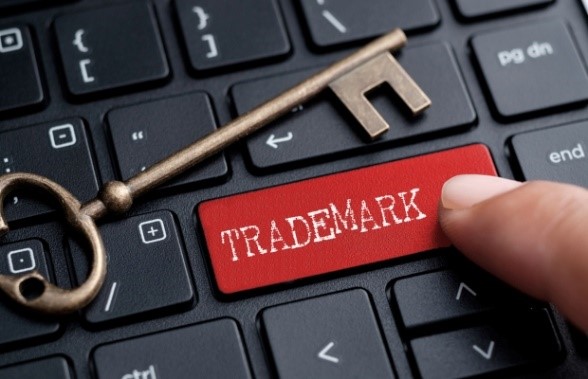Trademark Modernization Act- An Analysis
The history of the federal trademark law is almost as old as the Constitution. On July 8, 1870, the Federal Trademark was enacted as the first US Federal law to protect the trademarks. However, the US Supreme Court in 1879, held that the law was unconstitutional because it was in conflict with the provision on patents in the US Constitution. Thus, was abolished. In its place, a trademark law on March 3, 1881, was enacted that targeted the trademarks used in interstate commerce. But the law could not support the American development and thus, underwent a major amendment in 1905 and partial amendment in subsequent years. In 1946, after the enactment of Lanham Act, American trademark law was at the same pedestal as the English or German trademark laws. The act was similar to the English Trademark Law because it adopted use-based principles as its foundation. The Act, however, focused not only on the intention of the use but the actual use for the purpose of registration. However, in response to the international pressure, through an amendment in 1988, the intent to use was considered as a ground for registration. The act also adopted the principle of examination and included a publication requirement for applications.
The Trademark Modernization Act signed into law on December 27, 2020, aimed at creating new procedures for challenging pending applications and registrations and updated several rules relating to the prosecution of trademark applications before the United States Patent and Trademark Office.

- Ex Parte Expungement and Re-examination Proceedings: The report indicating the necessity of the Act and loopholes in the current law suggests that the trademark register must accurately reflect the trademarks that are currently in use so that it becomes easier for the business owners and potential applicants to analyse the already existing marks and selecting an innovative one for themselves. This often led to fraudulent trademarks as well and thus, to address the problems, the act created two new ex parte processes that will allow a third party or director to challenge whether a registrant made use of its registered trademark in commerce. If not used properly, the Office will have a valid ground to cancel the registration. The two proceedings include one for expungement and one for re-examination and are enacted to ensure the accuracy of the trademark register by providing a new mechanism for removing or cancelling the trademarks. In a re-examination proceeding, the USPTO must determine whether the proof provided by either party about the non-usage of the mark for commercial use is true or not.
- New non-use ground for cancellation before the Trademark Trial and Appeal Board (TTAB): Section 14 of the Act provides a new non-use ground allowing a petitioner to allege that a mark has never been used in commerce as a basis for cancellation before the board.
- Flexible Response Periods: Section 12(b) of the Act was amended to allow the USPTO to set a response period by regulation for a period between 60 days to 6 months, with an option of further extension. Subsequently, the applicants shall have a period of 6 months to file for the replies against examination reports.
- Letters of Protest: The act amends Section 1 to add a new paragraph providing express statutory authority for the USPTO’s existing letter-of-protest procedure, which provides a way to the third parties to submit to the USPTO for consideration and entry into the record, evidence bearing on the registrability of the mark. The act further also authorizes the office to charge a fee for letters of protest.
- Suspension of Proceedings: The act clearly provides that the proceedings related to re-examination and expungement are included in the actions that can be suspended by the Office or the Board. The suspension, as under the act, shall normally be maintained until the outcome of the proceedings has been clearly established.
- Attorney Recognition: It is amended that for the purposes of an application or registration, recognition of a qualified attorney as the applicant’s or registrant’s representative will continue until the owner revokes the appointment or the attorney withdraws from representation. Thus, recognition would continue when an application abandons, post-registration documents are filed and accepted, or a registration expires or is cancelled. Once the recognition has ended because of one of these events, either the previously recognized attorney or a newly appearing attorney may be recognized as the attorney of record by signing a submission to the USPTO on behalf of the applicant or registrant or by being named as the attorney in a submission filed on behalf of the applicant. The attempt herein is also to identify fraudulent advocates and solicitor and take requisite actions against them. Further, it also states that once the attorney is fraudulently or mistakenly included in a case without the practitioner’s knowledge and awareness, the appointment shall be deemed to be ineffective.
Therefore, the act brings forward new rules and regulations to improve the efficiency in the entire process of registration and examination.
Conclusion
These new proceedings are intended to provide a faster, more efficient, and less expensive alternative to a contested inter parties cancellation proceeding before the TTAB. While the authority for the expungement and re-examination proceedings is set forth in separate subsections of the Act, the procedures for instituting the proceedings, the nature of the evidence required, and the process for evaluating evidence and corresponding with the registrant will be essentially the same. Thus, for administrative efficiency, proceedings involving the same registration may be consolidated by the USPTO for review. The new procedures are intended to improve the efficiency of the entire framework and thus, must be implemented at the fullest with sufficient resources and personnel.
Author: Tanya Saraswat – a student at School of Law, Narsee Monjee Institute of Management Studies, in case of any queries please contact/write back to us at support@ipandlegalfilings.com or at IP & Legal Filing



